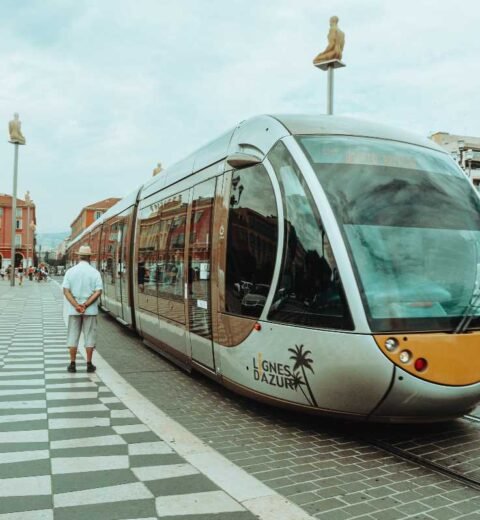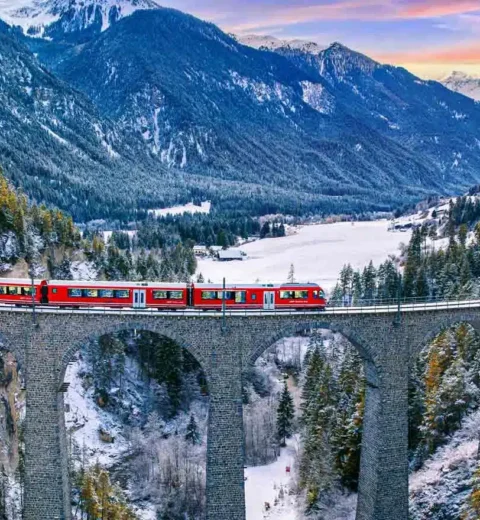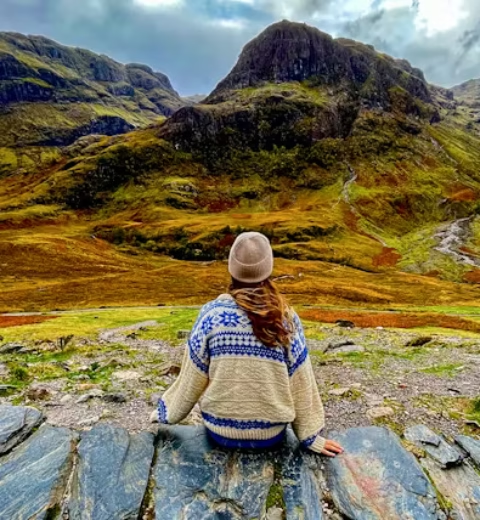Norway – the land of fjords, midnight sun, and aurora borealis – is a dream destination that feels like stepping into a postcard. With its dramatic landscapes, from towering mountains to serene coastal villages, it’s no wonder it’s topping travel bucket lists worldwide.
But for first-timers, planning a trip to this Scandinavian gem can seem daunting. Norway isn’t cheap, and its remote beauty requires some strategy.
In this guide, I’ll break down everything you need to know: the best time to visit, a realistic cost breakdown, and essential tips to make your adventure smooth and unforgettable. Whether you’re chasing summer hikes or winter lights, let’s get you ready to explore the “Land of the Midnight Sun.”
The Best Time to Visit Norway: Seasons and What to Expect
Norway’s weather is as unpredictable as its stunning scenery, but timing your visit right can make all the difference. The country spans from the Arctic Circle to milder southern coasts, so experiences vary by region. Here’s a seasonal breakdown to help you decide:
Summer (June to August): Peak Season for Outdoor Adventures
- Why go? This is the sweet spot for first-timers. Long days (up to 24 hours of sunlight in the north) mean endless hiking, fjord cruises, and exploring national parks like Jotunheimen. Festivals like Bergen’s International Festival add cultural flair.
- Pros: Mild temperatures (15–25°C/59–77°F), accessible trails, and vibrant wildlife. Ferries and trains run frequently.
- Cons: Crowds and higher prices. Book accommodations and tours months in advance.
- Best for: Families, hikers, and city explorers. Aim for late June to mid-July for the midnight sun without the peak rush.
Winter (December to March): For Northern Lights and Cozy Vibes
- Why go? If you’re after the magical Northern Lights (best in Tromsø or Lofoten Islands), this is your season. Snowy landscapes turn Norway into a winter wonderland for skiing and husky sledding.
- Pros: Fewer tourists, lower costs (except holidays), and festive markets. Temperatures range from -5°C to -15°C (23–5°F) in the south, colder in the north.
- Cons: Short days (as little as 4 hours of light), potential road closures, and extreme cold. Not ideal for fjord-hopping due to the weather.
- Best for: Adventure seekers and romantics. December–February for lights; March for milder snow activities.
Shoulder Seasons (April–May and September–October): The Smart Choice for Budget Travelers
- Why go? Spring brings blooming landscapes and fewer crowds, while fall offers golden foliage and early aurora sightings. It’s a great time for road trips along the Atlantic Road.
- Pros: Balanced weather (5–15°C/41–59°F), cheaper flights and hotels, and quieter trails.
- Cons: Unpredictable rain and some attractions (like mountain roads) may be closed.
- Best for: Solo travelers or those wanting a mix of summer and winter vibes without the hassle.
Pro Tip: Check the Aurora Forecast app for Northern Lights predictions, and use Yr.no for hyper-local weather updates – Norway’s own meteorological service is spot-on.
How Much Does It Cost to Visit Norway? A Realistic Budget Breakdown
Norway ranks among the world’s most expensive countries, but with smart planning, you can keep costs manageable. Expect to spend $150–300 USD per day per person (excluding flights), depending on your style. Here’s a breakdown for a 10-day trip for one traveler (mid-range budget; prices in USD, approximate as of 2023–2024):
| Category | Budget Option | Mid-Range | Luxury | Notes |
| Round-Trip Flights (from major US/EU hubs) | $500–800 | $800–1,200 | $1,500+ | From NYC to Oslo: ~$600 off-peak. Use Skyscanner for deals. |
| Accommodation (9 nights) | $450–900 ($50–100/night) | $900–1,800 ($100–200/night) | $2,000+ | Hostels in Oslo/Bergen; cabins in fjords. Airbnb or Booking.com for deals. |
| Transportation (trains, buses, ferries) | $200–400 | $400–600 | $800+ | Norway in a Nutshell pass (~$250) covers iconic routes. Rent a car for flexibility (~$50/day + gas). |
| Food (meals + snacks) | $200–300 ($20–30/day) | $300–500 ($30–50/day) | $600+ | Supermarkets like Rema 1000 for picnics; try local salmon. Street food or casual eateries save money. |
| Activities & Attractions | $100–200 | $200–400 | $500+ | Free hikes; paid fjord cruises (~$100). Oslo Pass (~$50/24hrs) for museums/transport. |
| Misc (SIM card, tips, insurance) | $50–100 | $100–150 | $200+ | Travel insurance essential (~$50/trip). Tipping isn’t customary. |
| Total for 10 Days | $1,500–2,700 | $2,700–4,650 | $5,600+ | Travel insurance is essential (~$50/trip). Tipping isn’t customary. |
Budget Hacks:
- Travel off-peak to slash flight and hotel costs by 20–40%.
- Use the Oslo/Bergen public transport cards for unlimited rides.
- Eat like a local: Pack lunches from grocery stores and splurge on one nice dinner (think fresh seafood for $30).
- Freebies abound: Norway’s “right to roam” (Allemannsretten) lets you camp and hike freely in nature.
If you’re on a tight budget, focus on one region (e.g., Oslo and nearby fjords) to minimize transport costs.
Essential Travel Tips for First-Timers: Making Norway Your Own
Norway is user-friendly for travelers, but its vast size and unique culture require preparation. Here’s how to navigate like a pro:
Getting There and Around
- Fly into Oslo (OSL) or Bergen (BGO): Oslo is the main hub with direct flights from the US/Europe. From there, trains like the Bergen Railway offer scenic rides (4–7 hours to the fjords).
- Public Transport is King: Download the Entur app for buses, trains, and ferries. The Norway in a Nutshell tour (train + ferry through fjords) is a must-do for $250–300.
- Rent a Car? Yes, for rural areas like the Trollstigen road, but be prepared for tolls ($10–20/day) and winter chains. EVs are common and subsidized – go green!
- Internal Flights: Widerøe or SAS for quick hops to Lofoten (~$100 one-way).
What to Pack and Prepare For
- Layers are Essential: Weather changes fast – pack a waterproof jacket, sturdy hiking boots, and thermals for year-round rain/snow.
- Tech Essentials: EU plug adapters, a portable charger (long days drain batteries), and an eSIM like Airalo for data (~$10 for 5GB).
- Visa and Health: Schengen visa-free for US/EU citizens up to 90 days. No mandatory vaccines, but get travel insurance covering adventure activities. COVID rules are minimal now, but check updates.
Must-See Spots and Experiences
- Oslo: Start here for the Viking Ship Museum and Vigeland Sculpture Park. Stroll Aker Brygge for waterfront vibes.
- Fjords (Western Norway): Cruise the Geirangerfjord or hike Preikestolen for epic views. Bergen’s colorful Bryggen wharf is a UNESCO gem.
- Northern Norway: Tromsø for lights and whales; Lofoten for dramatic islands and fishing villages.
- Hidden Gems: Drive the Atlantic Road or visit Ålesund’s Art Nouveau architecture.
Cultural and Practical Tips
- Cashless Society: Cards are accepted everywhere – even small kiosks. ATMs are rare; withdraw if needed.
- Language: English is widely spoken, but learn “takk” (thanks) and “hei” (hello) to charm locals.
- Sustainability: Norway leads in eco-tourism – use reusable water bottles (tap water is pristine) and stick to trails to protect the environment.
- Safety First: Low crime, but watch for pickpockets in cities. Wildlife like moose can surprise drivers.
- Solo or Group? Norway’s safe for solos, but join guided tours (e.g., via Viator) for social vibes and expertise.
Common Pitfall to Avoid: Don’t underestimate distances – Norway is huge (taller than it is wide!). Plan 7–14 days minimum.
Ready to Book Your Norwegian Adventure?
Norway isn’t just a trip; it’s a reset for the soul, blending raw nature with modern ease. Whether you’re summiting peaks in summer or chasing lights in winter, the key is preparation and flexibility. Start with a flexible itinerary, budget wisely, and let the landscapes steal the show.
Have questions or need itinerary ideas? Drop a comment below – I’ve got more tips where this came from. Safe travels, and may the fjords welcome you!
Ready to Plan Your Dream Trip to Italy?
If you’ve been dreaming of exploring Italy’s breathtaking landscapes, world-famous landmarks, and irresistible food, this guide will help turn that dream into reality!
From planning your itinerary and setting your budget to discovering hidden gems beyond Rome, Florence, and Venice — we’ve got everything you need to make your Italian vacation smooth and unforgettable.
Click the link below to learn step-by-step how to plan your trip to Italy:
How to Plan a Trip to Italy
Whether you’re a first-time visitor or returning for more dolce vita, eurotravelo.com offers expert tips, travel hacks, and detailed itineraries to help you experience Italy like never before. Visit our site and start planning your Italian adventure today!
FAQs
When is the best time to see the Northern Lights in Norway?
The best time is from late September to early March, with peak visibility in December to February. Head to Tromsø or the Lofoten Islands for the best chances, and use the Aurora Forecast app to track activity.
How expensive is a trip to Norway for first-timers?
A 10-day mid-range trip costs about $2,700–$4,650 per person, including flights, accommodation, food, and activities. Budget travelers can manage $1,500–$2,700 by staying in hostels, eating at supermarkets, and traveling off-peak.
Do I need a visa to visit Norway?
US and EU citizens can stay visa-free for up to 90 days in Norway (part of the Schengen Area). Always check current entry rules before booking, and ensure your passport is valid for six months.
What’s the best way to get around Norway?
Public transport (trains, buses, ferries) is reliable—use the Entur app to plan routes. The Norway in a Nutshell tour is great for fjords. Renting a car is ideal for rural areas, but expect tolls and high gas prices.
What should I pack for a trip to Norway?
Pack layers: waterproof jacket, hiking boots, thermals, and a hat, as the weather is unpredictable year-round. Bring an EU plug adapter, portable charger, and reusable water bottle—Norway’s tap water is excellent.




